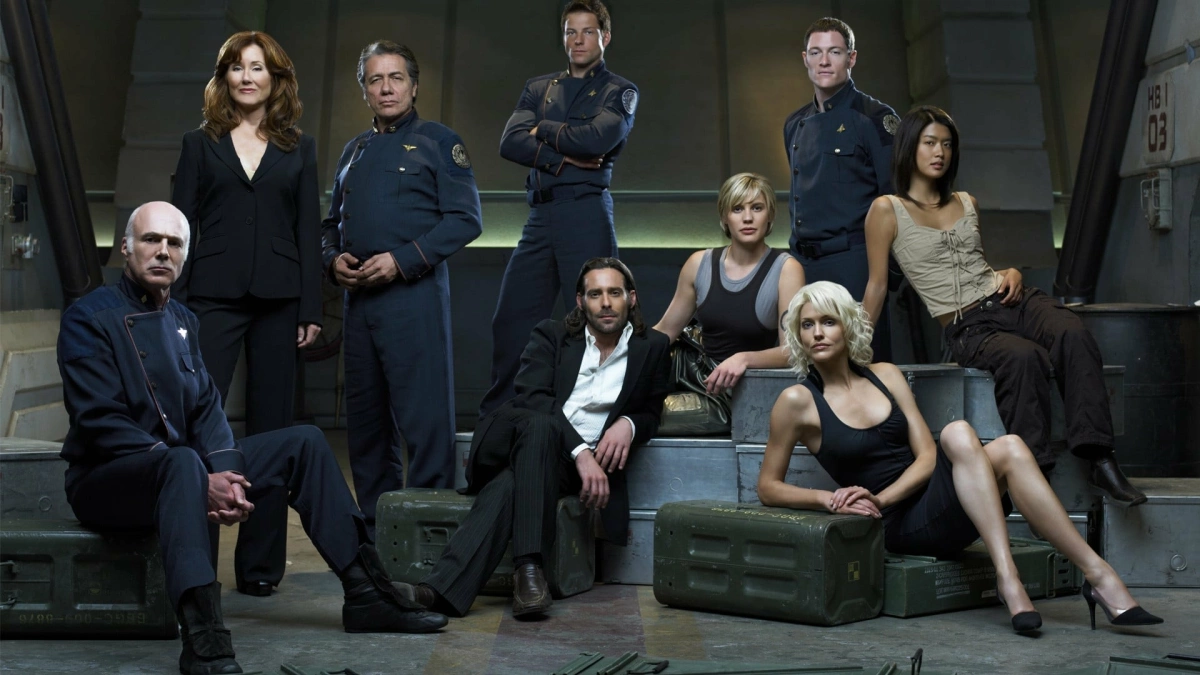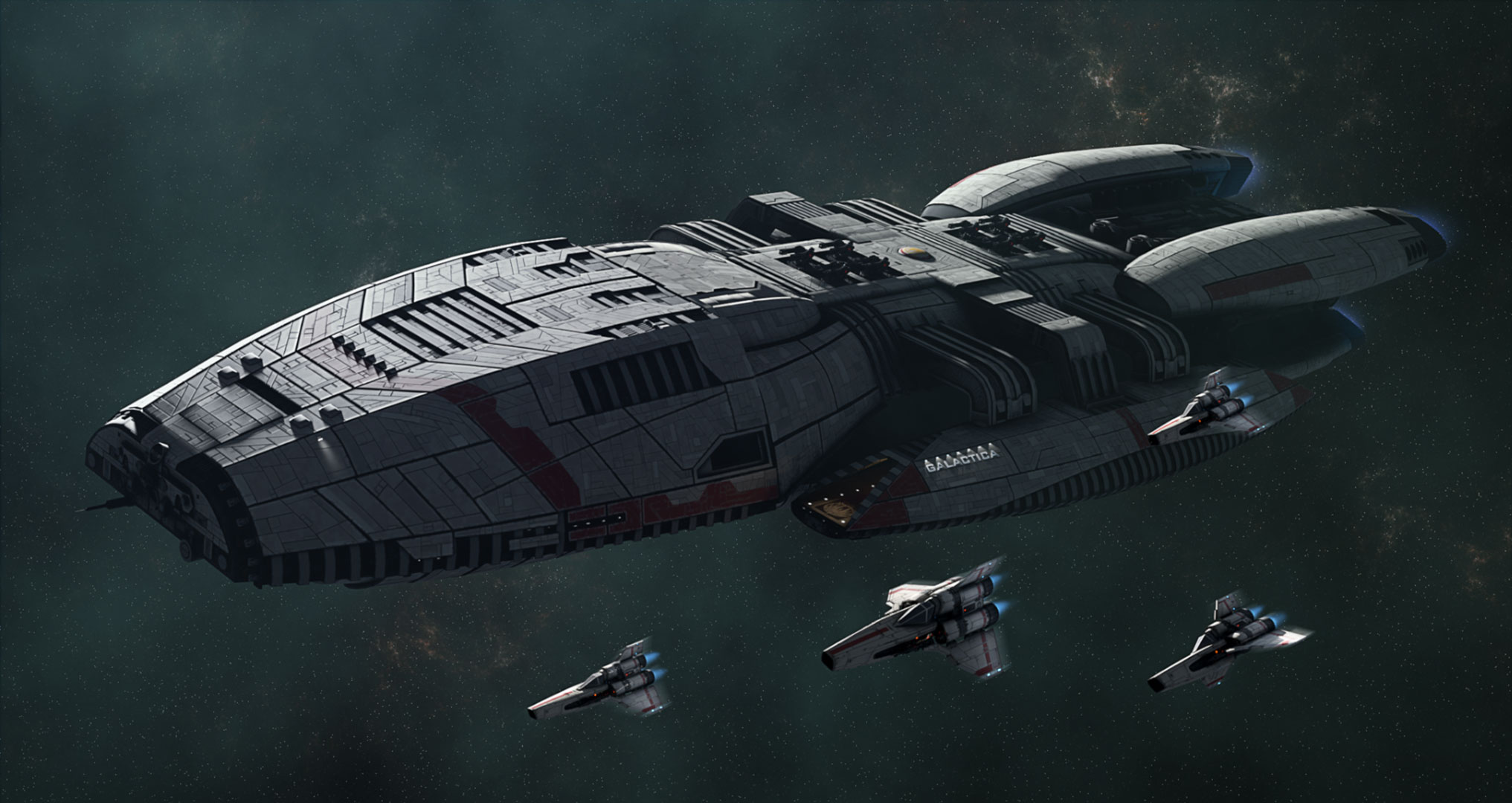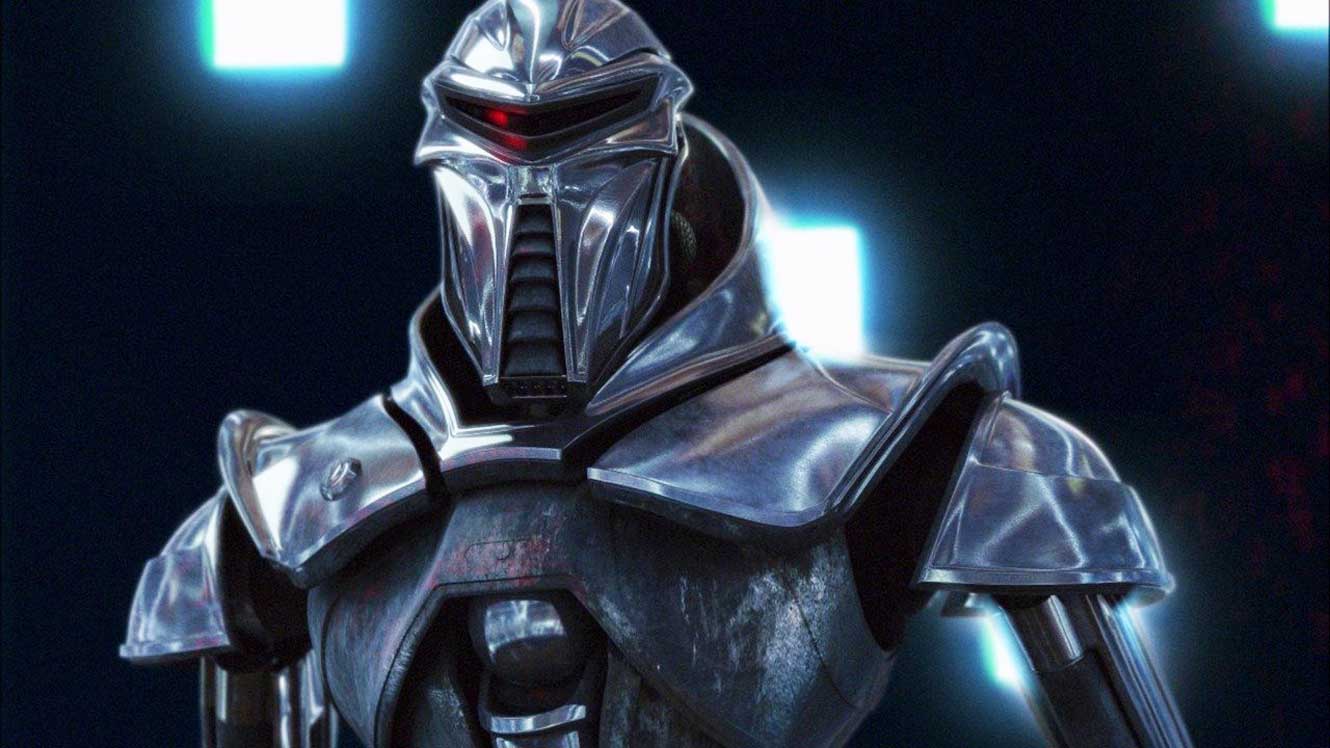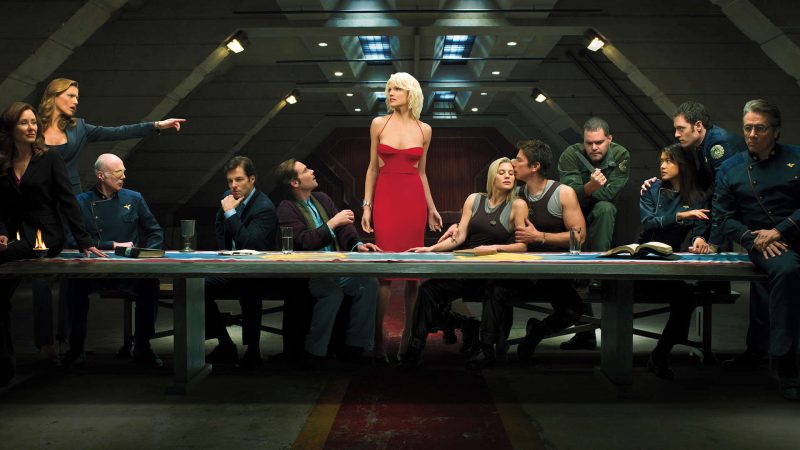The fascination with space and everything related to it captures our interest profoundly. Science fiction movies and well-made series that take us into space often become classics. Creating a space-themed series is not an easy task, as it requires significant production value. However, when successfully executed, it garners immense love and appreciation. Star Trek, Firefly, and, in my opinion, one of the recent gems, The Expanse, are among the successful space series.
Nevertheless, Battlestar Galactica holds a distinct position among them and is considered the father, the pioneer, of the space series. Two significant reasons contribute to this: Firstly, Battlestar Galactica is not a typical space warfare story but rather a resistance film that portrays humanity’s struggle for survival. Secondly, Battlestar Galactica makes profound claims and statements about humanity and space. Even its finale alone is a compelling reason for it to be hailed as one of the greatest shows in history.

In brief, let’s delve into the storyline: Humans create robots called Cylons to serve them. However, at some point, the Cylons rebel against their creators, sparking a war. After the war, the Cylons disappear into the depths of space, remaining absent for years. Humanity continues to live as if the Cylons never existed. But after many years, the Cylons return, and they return more advanced than ever before. Producing 12 models that closely resemble humans, the Cylons infiltrate among the human population for their grand plans. Some of them are even unaware of their true nature and believe themselves to be genuine humans. The genius scientist Gaius Baltar becomes entangled in the Cylons’ schemes. They disable all defense ships awaiting outside Earth and annihilate our beautiful blue planet with nuclear bombs.
Only one ship, named Galactica, manages to survive the destruction. Galactica, a 40-year-old museum piece, lacks the sophisticated network infrastructure found on other top-level ships. The Cylon attack has no effect on Galactica, allowing it, along with a few remaining ships in its fleet, to preserve the continuation of humanity. Only 50,000 people survive—50,000 individuals, a small fleet, and Cylon ships lurking outside waiting to exterminate them. Humanity is brought to the brink of complete annihilation by the Cylons, whom they never took seriously, and they are condemned to seek a new hope, a new world, a new home, to carry on their thousands of years of history.
With 50,000 desperate individuals and a handful of ships struggling to survive, the people in Battlestar Galactica don’t transition into the state of nature as described by Thomas Hobbes. Despite being a mere few, they strive to maintain the hierarchy of government and defense. This includes politics and journalism as well. The series portrays not only the battle against the Cylons but also humanity’s entrapment on the ships and their ongoing struggle to retain their humanity. Here, significant ironies come into play. Throughout its four seasons and 74 episodes, the series explores various new topics each season. Particularly in the first and fourth seasons, the show delves deeply into humanity’s attempt to preserve their religious beliefs against all odds and the serious notion that these beliefs may guide them to their new home.
In addition to portraying humanity’s efforts to maintain their classical way of life, the series is also successful in creating a gripping atmosphere. The Cylons have infiltrated among humans, and their identities remain unknown. This comes as a great shock to humanity, as the fact that the robots they created have now produced humanoid robots poses a significant threat. Furthermore, it is even more intriguing that some of the 12 Cylon models are unaware of their own true nature. This mystery is preserved throughout the 74 episodes, remaining fresh and engaging.

Although the series began in 2004, it boasts impressive visuals and legendary battle scenes. Unlike in many contemporary shows, the series doesn’t confine the warfare to a single episode, treating it as a crescendo. The initial season consists of 13 episodes, but as it gained popularity, the episode count was increased to 20. With more episodes, the content expands as well. As a result, the conflict is not a forthcoming element of suspense but a situation that can arise at any moment. The series presents space battles rarely seen in many films and deserves recognition for its storytelling, action, and effects. Even in the present day, in 2023, when we may encounter works that can be considered of poor quality, Battlestar Galactica boasts stunning visuals.
In fact, we can refer to the series as a space theater due to its filming style. As a long-running series, Battlestar Galactica doesn’t rely on aesthetic shots. Apart from sudden zooms during battle scenes and certain dramatic moments, which might be the only aesthetic approach the series employs, the majority of the shots are executed in an actual and theatrical manner. The show achieves consistency and success in this aspect, and its performances are equally remarkable. The series features notable names such as Katee Sackhoff, who also appears in another space series, The Mandalorian, as Bo-Katan, as well as Edward James Olmos and Mary McDonnell. However, when Battlestar Galactica is mentioned, the first name that comes to mind is, perhaps, Tricia Helfer. Cylon god bless her. The series includes many main characters, and their stories are intertwined in parallel. As the seasons progress, we start to focus not only on humans but also on the Cylons who experience the astonishment of being in human bodies and undergo an internal quest.
Battlestar Galactica is fundamentally a classic space story. Artificial intelligence evolves, declares war on humans, and this war is depicted throughout the fourth season. These days, when we consider the advancements made by OpenAI and Boston Dynamics, which are rapidly booming in 2023 and have raised concerns among many thinkers, I cannot fail to mention Battlestar Galactica, produced in 2004. However, its shockingly grounded conclusion distinguishes the series from other productions that deal with the same subject. The series claims that humanity, fundamentally a flawed entity, will continue to make the same mistakes even after thousands of years. The emphasis on thousands of years is significant. Time is the essential element that allows errors to resurface again and again because the entity called human is both intelligent and foolish. The consequences of its intelligence will lead to unsolvable problems.
Time not only changes and causes the forgetting of individuals but also cultures. In a world where we even wage war against the ideas of 20 years ago, it is challenging, let alone remembering, to continue the culture of 100 years ago. Essentially, this oblivion is at the core of the series. It says: Humans have created artificially intelligent robots time and time again, and each time, these robots have declared war. Especially as we approach the finale, when they discover the wrong planet, we experience a great shock. I cannot explain the mind-blowing realization I had while watching this episode at the age of 17. Throughout the four seasons, when they realize that the planet they have been searching for is actually the one where their ancestors lived. And they realize that all their beliefs were not created by a “powerful creator” but instead by the previous humans who left their planet behind like them; it was the second most shocking thing I had ever witnessed in the history of television. The first, of course, Hurley saying, “Did we crash ourselves?” in the episode “The Incident: Part 1.”
Without us realizing it, the series never explicitly mentions the time period in any of its points. When we see the spaceships, we automatically assume that the series takes place in the -let’s say- 3000s, but in reality, the series is set before the Common Era. Towards the finale -at the end-, the planet they find is actually our current planet, the one Carl Sagan referred to as the “Blue Pale Dot.” In the final scene, the series shows the AI robots being manufactured on the big screens in New York, indicating that we may face such a war “again” and that humanity may have to find a new home in the future. It is 2023, and artificial intelligence is advancing at an unprecedented pace. It has led people and thinkers to fear whether those fictional “doomsday” stories we wrote in movies and TV series could become a reality.

One aspect of the series that caught my attention is how it connects the finale to the present day. We discussed how culture is eroded by time. People come to Earth with “spaceships,” which we don’t even have today, and over time, they forget everything. This part piqued my interest when I was 17 because we are talking about a pretty logical inevitability. I request that you listen to the video I shared in the link.
THE LINK
He says it will be mythology five generations later. Isn’t that interesting? Even though the remaining crew of Battlestar Galactica has come to Earth, they have forgotten the place they came from and the technology they had. And as generations progress, everything starts anew. All that remains are absurd stories.
Battlestar Galactica, despite containing numerous epic battle scenes, depicts humanity’s struggle for survival against the robots it created in space. To the extent that even the robots themselves become concerned about saving their own lives. It’s a struggle to ensure the continuation of a two-sided species. Nowadays, with episodes ranging from 8 to 13 episodes, there is a possibility of getting bored with 74 episodes. Especially the fourth season, coincidentally, during the famous screenwriters’ strike, which is still ongoing these days, resulted in some filler episodes. Unfortunately, some episodes can be quite tedious. However, despite that, the series brilliantly establishes its action and the trails of mystery we reach in the finale. Even after almost 20 years have passed, it still maintains its position as not just a space series but, according to many, one of the best series in history.

Cast & Crew
creator: Glen A. Larson, Ronald D. Moore
starring: Edward James Olmos, Mary McDonnell, Jamie Bamber, James Callis, Tricia Helfer, Grace Park, Katee Sackhoff, Michael Hogan, Aaron Douglas, Tahmoh Penikett, Alessandro Juliani
USA | 2004 | 74 EPISODES |
